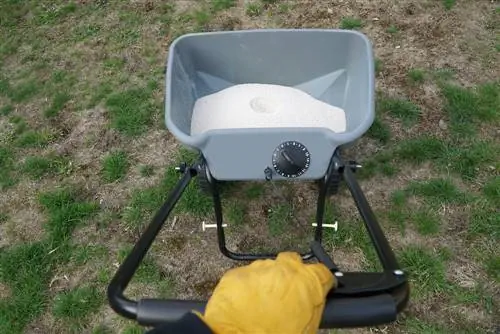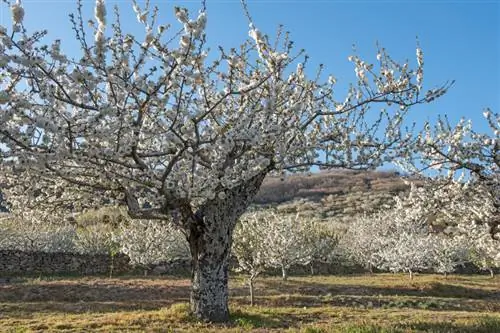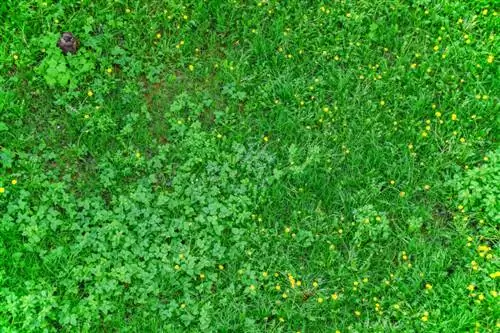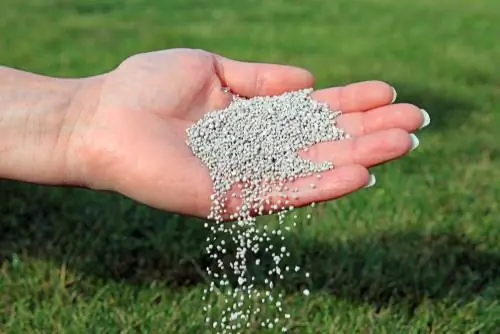- Author admin [email protected].
- Public 2023-12-16 16:46.
- Last modified 2025-06-01 06:02.
Creeping acidification and signs of fatigue in the garden soil cause significant problems in the growth of ornamental and useful plants. With natural lime you have an effective soil additive in your hands that restores the natural balance in the earth. This guide explains how to recognize a lack of limescale. Get to know the best lime fertilizers with practical tips on the correct dosage in your garden.
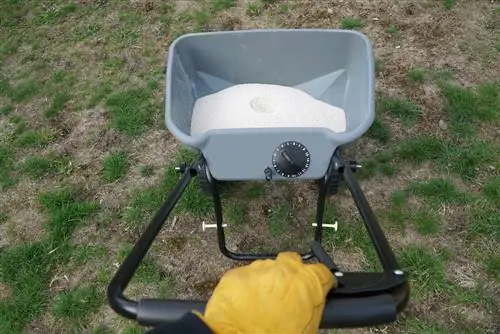
How should you properly whitewash the garden?
To lime the garden successfully, pay attention to indicator plants for lime deficiency, test the pH value of the soil and choose a suitable lime fertilizer such as algae lime or dolomite lime. Dose 150g per square meter every 3 years for stabilization or 250-500g per square meter to increase the pH by one point.
Detecting a lack of limescale - this is how it works
If you regularly observe which plants establish themselves in your garden, you will receive valuable information about the soil quality. Indicator plants for lime deficiency in the early stages are moss, hare trefoil, sorrel, sand pansies and field horsetail. In the advanced stages, lime deficiency causes growth problems in numerous plants, such as dried leaf tips or yellowish leaves.
Final security is a pH value test (€15.00 on Amazon) from the garden center or hardware store. The following results are desirable for he althy garden soil:
- Loamy soil with a small amount of sand: 6.5 to 7.0
- Sandy loam soil: 6, 0
- Pure sandy soil: not below 5.5
If these values are not met, you should lime your garden. An exception applies to rhododendrons, hydrangeas, heather and other plants that only thrive in acidic soil with a pH value of 5.5 and lower.
Recommended lime fertilizers for your garden - a selection
If you have come to the conclusion that your garden needs lime fertilization, there are various products to choose from. In the naturally managed ornamental and kitchen garden, the following lime fertilizers conform to ecological principles:
- Algae lime, consisting of 70 percent calcium carbonate, 20 percent magnesium carbonate and valuable trace elements
- Dolomite lime (carbonated lime) with a high magnesium content, primarily suitable for conifers
- Rock powder, with different duration of action depending on the source rock
- Lime marl, with 70 percent carbonate of lime and 30 percent clay, ideal for light sandy soils
Blasted lime and slaked lime are not recommended for liming in the garden. Both products are highly corrosive and pose a he alth risk in private ornamental and kitchen gardens.
Dosing and administering lime correctly - you should pay attention to this
Please pay special attention to the dosage of lime. The more carbonated lime is administered, the more valuable humus is broken down. In the short term, your plants benefit from the rich supply of nutrients. Over time, however, the soil becomes depleted. Therefore, an old farmer's rule warns that lime makes fathers rich and sons poor. The following guideline values have proven themselves in practice:
- Every 3 years 150 grams per square meter to keep the lime content stable
- 250 to 500 grams per square meter to raise the pH by one point
On light sandy soils, use a lower amount of lime than on heavy clay soils. If a dosage of more than 500 grams per square meter is required, please administer carbonated lime in two stages, 6 months apart.
Tip
Your lawn is particularly receptive to lime after scarifying in spring. Since you have combed out the moss and weeds, the minerals reach the roots of the noble grasses without any detours. Ideally, apply lawn lime with a spreader and then sprinkle the green area thoroughly.

